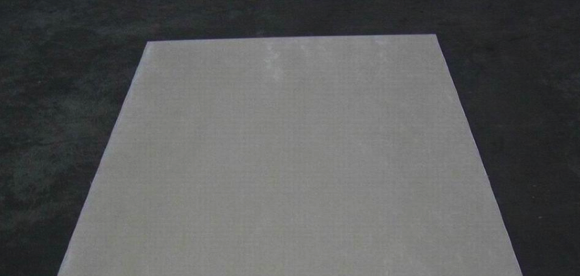When you undertake the task of installing ceramic tile walls in your shower or bathroom, it is important to ensure that your walls are prepped before you start putting up the tiles. Some people use vapour or moisture resistant gypsum drywall. There are all sort of tile backer boards in the market these days. Some are gypsum-based and others have a mix of ingredients. The cement-backer-board products can be a little tough to work with during the installation process, but in my opinion, they pay you back in spades for the effort.

Cured cement is not damaged by water. Immerse a piece of cement board in water for an indefinite amount of time, and it will never fall apart. Ceramic tiles installed directly over concrete or cement-base material tend to last longer and stay in great shape. In order to get a ceramic-tile job done well, you need to be sure the backer board is in the same plane and the walls are perfectly plumb. With cement backer board, you must get the framed walls perfectly plumb and flat. Cement backer boards are thin and have uniform thickness. When attached to the studs in a wall, it tends to conform to the shape of the stud wall. This means twisted, out-of-plumb frame walls will lead to twisted, out-of-plumb ceramic tile. Cut cement backer boards with a circular saw with an abrasive blade, although this would kick up a cloud of choking dust and can damage the saw motor. You can also use a carbide-tipped blade with a circular saw to cut or score the boards. Apply pressure on the other side of the board along the line and snap it. Backerboard comes in a range of sizes: 3- by 5-foot sheets are most common for floors.
Install a water-resistant barrier between the backer board and the wall framing/floor for additional moisture resistance. You can put overlapping layers of asphalt felt paper or go with a large sheet of plastic commonly used for a vapor barrier. This layer helps protect the wood framing from wood rot should the rare instance that water would soak through the cement backer board.
Leave a ¼ inch gap between the top of the tub with the bottom edge of the back board when installing the backer board by the tub. This is so that water will not seep through to the capillary into the backer board. Also leave a 1/8 inch gap between the boards that you put up. Make sure that you install the cement backer board securely to the wall studs. You can either screw or nail the boards to the wood framing. Corrosion-resistant screws can also be used. Using inferior fasteners that rust over time will fail and cause the boards to fall off the wall.
If you are going to secure the tiles with a mastic type adhesive be sure the smooth side of the cement board is facing out. If you are going to secure the ceramic tile with thin-set mortar (portland cement mixture) the rough side of the cement board should be facing out.
Install the backer boards by screwing or nailing the board onto the wall studs. Screws should be every 6 to 8 inches along the wood studs. Cement boards are not meant to add structure or reinforce the wall, but to give the adhesive and tile something to adhere to. Checked to make sure there is no movement after you’ve installed the cement backer boards, or this may cause the tile to crack or fall off. Close all seams between the cement boards with fiberglass tape. The glass fiber tape comes in rolls and has an adhesive on the back side for sticking to the cement board.
Installing cement backer boards for floors
- Snap grids of chalk lines on the floor to mark the dimensions of the sheets. It is easier to work with a small area than to try to cover a large area with adhesive that could dry before you place the backer board on it. Plan so that joints in the backerboard won’t line up with joints in the subfloor.
- With the smooth side of a ¼-inch notched trowel, spread enough adhesive for one sheet. Ridge the adhesive with the notched side of the trowel.
- Place a sheet of backerboard onto the wet adhesive surface. Leave a ¼-inch gap between the backerboard and the wall and a 1/8-inch gap between the backerboard sheets.
- Stagger the position of the sheets so that you don’t have four corners meeting.
- Drive screws into the backer board every 8 inches apart. Around the perimeter, position the screws at least 1/2 inch, but no more than 2 inches from the edge.
- Fill the joints with adhesive using a margin trowel or the flat side of your notched trowel. Smooth it so that it extends about 1 1/2 inches on each side of the joint. The extra adhesive makes it easier to bed the tape.
- Cover and push 2-inch vinyl-coated fiberglass tape onto the adhesive filled joints. When the tape is embedded, scrape off any excess adhesive from both sides.
- The cover each length of tape with a thin layer of adhesive, spreading and feathering the edges. Ensure the transition from board to board is as smooth as possible.
- After this is done you are ready to install the ceramic tiles.

